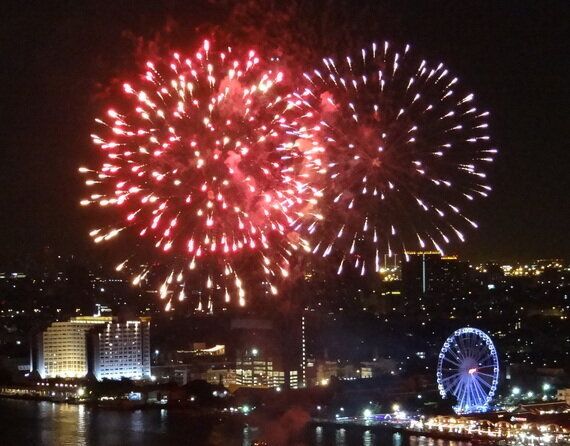
Authors own
During the four weeks around November the 5th, around 1,000 people will be injured from fireworks. Of these accidents, nearly 600 are likely to occur at home or private parties and nearly 400 accidents involve children under the age of 13.
Although great fun, fireworks are dangerous. The safest way to enjoy fireworks is undoubtably at a properly organised regulated firework display. If you are looking to host your own display, it is essential to plan and prepare in advance to ensure your evening is memorable for all the right reasons:
Fireworks:
If hosting your own fireworks display at home, ensure you have the following equipment to hand:
an appropriately stocked first aid kit,
a bucket of sand and easy access to plenty of cool running water,
a fire blanket
a bottle of sterile saline to irrigate eyes
If you are unsure of what to do in a medical emergency - please book onto a practical or online first aid course (we have excellent ones at www.firstaidforlife.org.uk or www.onlinefirstaid.com
Always check that any fireworks you buy conform to British Standards and only set fireworks off in your garden if you've got sufficient space.
The safest way to enjoy fireworks is to attend a properly organised display.
Sparklers:
Sparklers can be great fun, but they burn ferociously and should not be given to children under the age of five years old. They can get six times as hot as a pan of cooking oil or as hot as a welder's torch.
Only ever light sparklers one at a time and always wear gloves. Children should be closely supervised when using sparklers, ensuring they stand still and have sufficient space away from other people. Have a bucket of sand for used sparklers and ensure no one picks them up until they have cooled completely.
However careful you are, injuries can happen, the following information details first aid for some of the more common accidents:
Burns:
Hold the burnt area under cold, running water for at least 10 minutes to cool the burn,
keep the casualty warm - look out for signs of shock.
If a child is burnt and the area is blistered and larger than a 50p piece, you should phone for an ambulance and keep cooling the burn under water whilst awaiting their arrival.
Once the burn has been cooled for at least 15 minutes, the burn can be covered with cling film or inserted into a sterile plastic bag if appropriate.
If someone's clothing is on fire
Remember : stop, drop, wrap and roll.
Stop the casualty panicking or running - any movement or breeze will fan the flames causing them to spread quicker.
Drop the casualty to the ground and wrap them in a blanket, coat, or rug. Ensure they are made from inflammable fabrics such as wool.
Roll the casualty along the ground until the flames have been smothered.
Severe burns:
If clothing has caught fire it is often likely to result in a severe burn. A severe burn is deep and may not hurt as much as a minor one due to damage to the nerve endings.
Immediately start cooling the burns, running them under cool water, for a minimum for 10 minutes. Using a shower if the burns are large. Keep cooling the burn while waiting for professional help to arrive. Ensure you are cooling the burn and not the casualty, keep areas that are not burnt as warm and dry as possible to try and monitor them closely for signs of shock.
Instruct a helper to dial 999 or 112 for an ambulance
Ensure the casualty is as comfortable as possible and make sure you reassure them. Ideally, lie them down and elevate their legs, to reduce the effects of clinical shock.
Whilst cooling, remove any constricting items such as jewellery or clothing from the affected area. Never remove anything that has stuck to the burn. Wear sterile gloves if available.
NEVER:
Touch the burn
Use lotions, ointments or creams
Use adhesive dressings
Break blisters
Eye injuries:
Fireworks and bonfires can release sparks and debris which can land in the eye and be very painful. Wash your hands and carefully open the casualty's eye looking for any embedded objects. If there is anything lodged in the eye, cover both eyes and phone for an ambulance. However, if you can see the object and it is moving, use a sterile eye wash and gently irrigate the eye to remove it. If the casualty is still in pain, or discomfort, seek medical advice.
It is strongly advised that you complete an online or attend a practical first aid course to understand what to do in a medical emergency. Visit FirstAidforLife.org.uk, OnlineFirstAid.com or call 0208 675 4036 for more information about our courses.
First Aid for Life provides this information for guidance and it is not in any way a substitute for medical advice. First Aid for Life is not responsible or liable for any diagnosis made, or actions taken based on this information.
firstaidforlife.org.uk
emma@firstaidforlife.org.uk
0208 675 4036
For more information and further First Aid tips if something were to go wrong read the original article and visit our blog